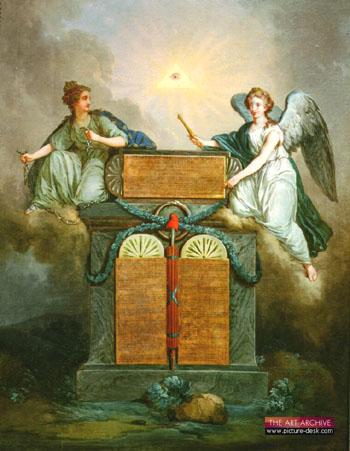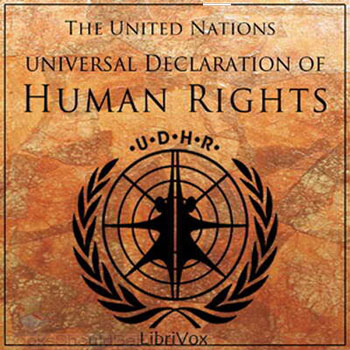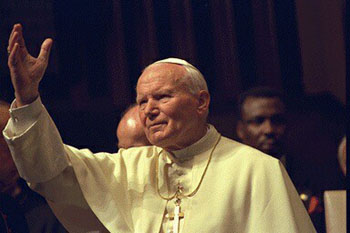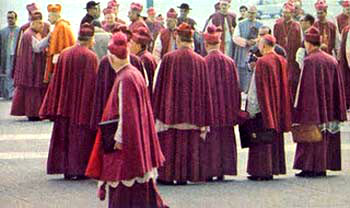 |
Church - State Relations
JPII & Dignitatis Humanae - III
Adopting the Goal of Secular Organizations as the Mission of the Church
Julio Alvear, Ph.D.
John Paul II affirmed and defended the right to religious liberty “in its full meaning” (1) with a clear positive content, that is, the right born from human dignity to profess any religion whatsover in the way one chooses following one’s conscience and influenced by cultural traditions.
Let us see how he came to this conclusion.
In his official teaching on religious liberty, John Paul II included, without reservations, the concept approved by the Universal Declaration of Human Rights of the United Nations and other modern declarations and conventions, as well as that expressed in the constitutions of modern democracies. (2) Now then, this liberty indisputably has a positive content. (3) It is not just the right to not suffer illegitimate restrictions, but it is, above all, a strict juridical law which recognizes that each individual and community can in principle profess its own religion in any circumstance and place, with some few limits regarding public order.
This doctrinal position was adopted officially by the Pontiff in the context of what he called his mission to present “the true face of the Church” to the world. (4)
In the 27 annual speeches delivered to the diplomatic corps accredited by the Holy See - which “represents a particularly significant moment of my pastoral ministry, having before my eyes the whole international community,” (5) John Paul II made a symbiosis between the mission of the Church and the mission of secular international organizations as favoring the rights of man. (6) In this context, he went on to reflect on religious liberty following the concept of these international European organizations on human rights in such a way that one can ask if he did not essentially and fully identify the former with the latter.
JPII adopts the principles of the Declaration of Human Rights
Many passages can be quoted to give an idea of his teaching. Here are some:

The Declaration of Human Rights established by the French Revolution in 1789, above, was adopted by the UN in 1948, below
 |
* “It seems to me that what the Church today calls the ‘natural order’ of conviviality or the ‘order desired by God’ finds its expression in part in the culture of the rights of man, if we can thus characterize a civilization founded upon the respect of the transcendental value of the person.” (7)
* “This year we commemorate the 40th anniversary of the Universal Declaration of Human Rights. Even though it has different interpretations, its elevated principles deserve universal attention. This document can be considered ‘a landmark on the long and difficult road of mankind.’ (Speech to the United Nations, October 2, 1979, n.7)” (8)
* “There is indeed a common good of mankind with very serious interests at stake that require the joint action of governments and all men of good will: the safeguarding of human rights, finding the solution to food, health and cultural problems as well as more international economic cooperation, weapons reduction, the elimination of racism… This is the common good of mankind! It is a ‘utopia’ that Christian thinking pursues tirelessly and constitutes the ceaseless search for just and humane solutions. … Many demands related to this good were expressed in the Declaration of Human Rights and in international pacts that allow their concrete application.” (9)
* “The Declaration is so important in our eyes that it transcends racial, cultural and institutional differences among peoples and affirms, beyond all borders, the equal dignity of every member of the human community; thus every constituted society, national and international, has the duty to respect, protect and promote it. It deals not only with the well-being of persons but also world peace.
“I am thinking especially of liberty of conscience. You know that I dedicated my last message on the World Day of Peace to this important theme. The right to religious liberty, that is to say, being able to follow the imperatives of one’s own conscience in the search for truth and to profess publicly one’s faith while freely belonging to an organized religious community, constitutes the raison d’être for the other fundamental human liberties. … This is why the Catholic Church has never ceased to be vigilant that everything be done to stop persecution and discrimination against believers and their communities. Doing so, she is aware of serving humanity as she defends the dignity of the person.” (10)
* “The preamble of the Charter of the United Nations reaffirms ‘the faith (of the signing peoples) in fundamental human rights and in the dignity and worth of the human person.’ The Church has special and very profound reasons to testify to these principles recognized by the wisdom of the nations and to safeguard them.” (11)
* “Last December 10, we celebrated the 40th anniversary of the proclamation of the Universal Declaration of Human Rights by the General Assembly of the United Nations. This document, which presents itself as ‘the common standard of achievement for all peoples and all nations’ (Preamble), has helped [the peoples of] mankind to be aware of their common destiny and of the patrimony of values that belongs to the whole human family.
“Among the fundamental liberties that the Church must defend, we naturally find religious liberty in the first place. The right to religious liberty is so closely linked to the other fundamental rights that we can correctly affirm that respect for religious liberty acts as a ‘test’ of respect for the other fundamental rights. The religious question, in effect, has two specific dimensions that mark its originality regarding other activities of the mind, especially those related to the conscience, thinking or convictions. On the one hand, faith recognizes the existence of Transcendence, which gives meaning to all existence and discovers the values that will later orient behavior. On the other hand, religious commitment implies the insertion of persons into a community. Religious liberty goes hand in hand with liberty for the community of the faithful to live according to the teachings of its Founder.” (12)
JPII encourages the Revolution to achieve its ideal
Dignitatis humanae’s acceptance of the concept of human rights and religious liberty used by secular international organizations was also largely affirmed many times in solemn interventions of John Paul II before such organizations, principally when he emphasized that the mission of his pontificate was do be “at the service of man.” This datum about his pontificate cannot be overlooked.
We provide excerpts here from three of these interventions on this topic.

At the UN, JPII receives an ovation for his support of its revolutionary ideals |
* “In a movement that one hopes will be progressive and continuous, the Universal Declaration of Human Rights and the other international and national juridical instruments are endeavoring to create general awareness of the dignity of the human being, and to define at least some of the inalienable rights of man. Permit me to list some of the most important human rights that are universally recognized: … the right to liberty of thought, conscience and religion, and the right to manifest one’s religion either individually or in community, in public or in private. … All of these human rights taken together are in keeping with the substance of the dignity of the human being, understood in its entirety.” (13)
* “One of the principal demands of liberty is the free exercise of religion in society (cf Dignitatis humanae, n. 3). No State, no group has the right to control either directly or indirectly a person’s religious convictions, nor can it justifiably claim the right to impose or impede the public profession and practice of religion, or the respectful appeal of a particular religion to the free conscience of persons. Recalling the 50th anniversary of the Universal Declaration of Human Rights, I wrote that ‘religious liberty constitutes the very heart of human rights. Its inviolability is such that it demands that individuals be recognized as having the right even to change their religion, if their conscience so demands. People are obliged to follow their conscience in all circumstances and cannot be forced to act against it (cf. article 18)’ (Message to the World Day of Peace, 1999, n.5).” (14)
* “Since the start of the Helsinki process, the participating States recognized the international dimension of the right to religious liberty and its importance for the security and stability of the community of nations. The Organization for Security and Cooperation in Europe continues its commitment to ensure that this fundamental human right, based on the dignity of the human person, be respected in an adequate manner. In a certain way, the defense of this right is the decisive ‘test’ to determine respect for all other human rights. … This is why, dear legislators, I can only welcome the commitment of your countries in the OSCE in the realm of religious liberty.” (15)
Vatican II & Dignitatis humanae as part of the Revolution
That same symbiosis of missions can also be noted when John Paul II addressed his brothers in the Episcopate and the faithful.
These unequivocal texts illustrate this affirmation.
* “The principle of religious liberty ‘contains’ one of the most fundamental rights of man. Vatican Council II dedicated one of its documents to religious liberty. With ever greater frequency this right assumes a key place in legislative documents. But much still remains to be done for this principle to function correctly in social and public life, on State and international levels.” (16)
* “The principle of religious liberty constitutes one of the main points of the Declaration of the Rights of Man and figures in the constitutions of every State. Based on this principle, which the Holy See frequently mentions and preaches, every believer is permitted to confess his faith in the ecclesial community to which he belongs.” (17)
The rights defined in DH
Numerous formulae used by John Paul II to describe or define the right to religious liberty (in addition to others where he affirms its negative content) presume or express the right that is essentially positive, going so far as to interpret Dignitatis humanae (n.2) extensively:
- “The right of a person to profess his convictions and to practice his religion within the reasonable limits established by a just public order (DH, 2-7). In each epoch there have been martyrs who defended and upheld this right.” (18)
- “The right to profess the faith, individually or in community, according to the rules of each religious family.” (19)
- “The right to live according to one’s faith and rite, following one’s religious convictions.” (20)
- “The possibility to find spiritual relief in the religious community to which one belongs.” (21)
- “The right to express publicly and in every sphere of civil life one’s own religious convictions.” (22)
- “The right to live in the truth of one’s faith and in conformity with the transcendent dignity of one’s person.” (23)
- “The possibility to develop religious life, transmit beliefs and values and participate in different levels of social life and in consulting bodies without being excluded for religious or philosophical reasons, according to the rules of a State governed by law.” (24)
- “The right to live in truth and liberty to adhere to the ultimate meaning of one’s life.” (25)
- “The liberty of the community of the faithful to live according to the teachings of its Founder.” (26)
- “The Church claims in favor of culture and, thus, in favor of man, both in the process of cultural development and in its propagation, a liberty analogous to that which the conciliar Declaration Dignitatis humanae (n. 2) requires for religious liberty.” (27)

By means of Dignitatis humanae, the Council adopted the ideals of the Revolution |
John Paul II definitively compiles a whole catalog of specific elements of the right to religious liberty, including rights of a positive content that are applicable to all religions equally and that are even more generous in their extension than those habitually written in international, national and supra-national civil declarations.
This catalog lists seven personal rights and 10 collective rights, which serve to remove any doubts about the extensive nature of the conception of religious liberty still seen, explicitly or implicitly, in the context of interpreting Dignitatis humanae. (28)
1. Cf. Il m’est agreable, speech to the new French ambassador to the Holy See, June 10, 2000, n. 5: “As I have often said, the first of human rights is religious liberty, in the full meaning of the term.”
2. Cf. Message Fin dal secolo to the World Day of Peace (January 1, 1989, n. 9); Speech Depuis le début to the government and diplomatic corps of Canada, Ottawa, September 19, 1984, n. 7.
3. Further, it is religious liberty with an indifferentist meaning. This aspect becomes complex if one takes into account the eulogies made by John Paul II of the Universal Declaration. In an effort to avoid the problem, someone might say that the Pontiff, given his world view, is simply alluding to the traditional liberty of conscience (cf. Pius XI, Encyclical Non abiamo bisogno, n. 23) and not to the [revolutionary] liberty of conscience. But this leads precisely to the root of the problem we are analyzing here: there are two different concepts of liberty of conscience.
4. In the Encyclical Redemptor hominis of March 4, 1979, John Paul II speaks of his mission to “present ad extra - to the outside world - the true countenance of the Church.” He further affirms that for this reason in the post-conciliar period, “much of the human family has become, it seems, more aware in all humanity’s various spheres of existence, of how absolutely necessary the Church of Christ, her mission and her service are to humanity. Often this awareness has proved stronger than the various critical attitudes that ad intra - internally - have been attacking the Church, her institutions and structures, and the ecclesiastics and their activities.”
5. Speech to the Diplomatic Corps (SDC) of January 12, 1981, n. 4.
6. An illustration of this symbiosis appears in the SDC of January 12, 1981, principally in n. 4, where the “mission of universal pastor,” along with the mission of those responsible for the institutional life of each country,” is defined as “a simple disinterested cooperation for the great causes regarding the life of mankind: peace, justice, the rights of the person, the common good.” Further on, he compared the work of missionaries with that of the “missionaries who work everywhere throughout the world, and also those who are engaged in international organizations and diverse social organs,” adding that “this immense work that the Church and your leaders want to accomplish together is summarized in a single word: the service of man.” (n. 4)
7. SDC January 9, 1988, n. 10. In the same sense, see SPC January 14, 1980, n.4.
8. SDC January 9, 1988, n. 10. The link between DH and article 18 of the Universal Declaration on Religious Liberty is emphasized more expressly by John Paul II in his last speech to the diplomatic corps of January 10, 2005, n.8, echoing that of January 12, 1978, n. 8.
9. SDC January 12, 1979, nn. 6 and 7.
10. Ibid., n. 11.
11. SDC January 14, 1980, n. 4.
12. SDC January 9, 1989, nn. 4-6.
13. Speech I desire to express to the 34th General Assembly of the United Nations, October 2, 1979.
14. Speech It is a great joy to the leaders of other religions and Christian confessions, New Delhi, November 7, 1999, n. 4.
15. Speech Je suis reconnaissant to the Assembly of the OSCE, December 10, 2003, n. 4.
16. Angelus of Sunday January 7, 1979, Il diritto fondamentale della libertà religiosa.
17. Letter Cum superioris mensis to the Cardinal Slipyj, March 19, 1979, in the occasion of the millennium of the evangelization of the Rus'.
18. Allocution Esiste un ordine, General audience, April 13, 1994.
19. SDC January 12, 1991, n. 5.
20. Allocution closing the Way of the Cross at the Coliseum, April 13, 1979.
21. SDC April 15, 1983, n. 10.
22. Message I molti popoli, loc cit, Introduction.
23. Message Nel primo giorno to the World Day of Peace, January 1, 1988, December 8, 1987, n.1. This definition was also quoted verbatim in the Encyclical Centesimus annus of May 1, 1991, n. 47, which presents it, in note 97, as an application of DH 1-2.
24. Speech Il m’est agreable to the French ambassador to the Holy See, June 10, 2000, n.5.
25. Speech Questo incontro on religious liberty to the 5th International Congress of Juridical Studies, March 10, 1984, n. 5. See also the speech Depuis le début addressed to the diplomatic corps of Canada in Ottawa, September 19, 1984, n. 7.
26. SDC January 9, 1989, nn. 4 and 6.
27. Speech Sinto-me feliz to eminent personalities of culture in Rio de Janeiro, July 1, 1980.
28. John Paul II affirms that these rights are “the specific elements that correspond to the concept of religious liberty and comprise their field of application, insofar as they are the logical conclusion of the demands of persons and communities, or insofar as they are required by their concrete activities.” Cf. message L’Eglise Catholique, addressed to the signers of the final Act of Helsinki at the Madrid Conference of Heads of States, September 1, 1980. The personal rights are referred to in n. 4a, the collective rights in n.4b.
Continued

Article first published in the magazine Catholica, Paris, Spring 2009
Posted December 31, 2012

Related Topics of Interest
 JPII's Hermeneutic Criteria for Dignitatis Humanae JPII's Hermeneutic Criteria for Dignitatis Humanae
 The Contours of Liberty of Conscience According to JPII The Contours of Liberty of Conscience According to JPII
 John Paul II Blesses the UN John Paul II Blesses the UN
 Card. Ottaviani Praises the UN & a Universal Republic Card. Ottaviani Praises the UN & a Universal Republic
 JPII Praises Liberty, Equality & Fraternity JPII Praises Liberty, Equality & Fraternity
 An Encyclical to Foster the Revolution An Encyclical to Foster the Revolution
 Paul VI Received at the UN by Fanfani & U Thant Paul VI Received at the UN by Fanfani & U Thant

Related Works of Interest
|
|
Church-State | Cultural | Home | Books | CDs | Search | Contact Us | Donate

© 2002- Tradition in Action, Inc. All Rights Reserved
|
 |

|